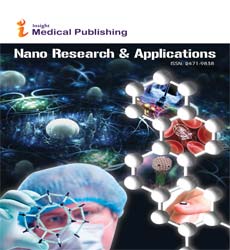Nanowastes and the environment: Potential sustainable management paradigm
Sherif A. Younis
Abstract
In the last decades, nanotechnology has grown exponentially among emerging technologies that provide practical and acceptable solutions to sustainable development in society's global challenges (i.e., meeting rising demands for essential commodities like water, food, and energy). However, as nanomaterials production has grown in quantity and volume, the environmental impact of nanowastes released directly into the environment will be a serious problem in the future due to their small size, high reactivity, and toxicity. Dealing with nanowastes is not easy like traditional bulk materials, as they can float in the air and penetrate animal and plant cells easily, provoking unknown effects to human health, ecosystems, and biodiversity. Besides that, a very little is still known about the behavior of nanomaterials in the environment and their exposure/ occupational risks in the so-called of End-of-LifePhase (EOL) and life cycle impact analysis (LCIA). Considering such situation, numerous efforts have been recently made to (1) develop efficient and unified policy to regulate the field of nanotechnology, (2) establish new effective methods and protocols to recycle nanowastes to combat their unexpected impact on human health and well-being, and (3) apply the precautionary principle to all nanotechnology developments. In this special E-talk topic, we aim to discuss and analyze underlying concepts related to: • Nanotechnology: what is it, and how is its development inserted into society? • Sustainable Development Goals (SDGs): Global framework • Nanomaterials fate life cycle and risk assessment: EOL vs. LCIA • Nanowaste: Definition & how to deal with the final destination of nanowaste? • Nanowastes and the environment: Volume and management paradigm? • Current status and challenges: Commercialization and disposal/ recycling standards of nanotechnological wastes in relation to SDGs targets
Open Access Journals
- Aquaculture & Veterinary Science
- Chemistry & Chemical Sciences
- Clinical Sciences
- Engineering
- General Science
- Genetics & Molecular Biology
- Health Care & Nursing
- Immunology & Microbiology
- Materials Science
- Mathematics & Physics
- Medical Sciences
- Neurology & Psychiatry
- Oncology & Cancer Science
- Pharmaceutical Sciences
